As a new mom, I know how it feels to want to return to a fitness routine as quickly as possible. However, before you even attempt any sort of intense workout, it is essential that you restrengthen the abdominals with safe core exercises.
Here’s the scoop: The outer abdominal muscles separate during pregnancy to make room for the baby. For many women, this separation leads to diastasis recti, which, until healed, can affect everything from posture to pooping.
By reestablishing proper core function in the early postpartum days, you will feel strong and confident to take on your next fitness challenge and, more importantly, life as a new mom!
Can you spare 10 minutes a day? Then you can do this 7-Day Paleo Weight Loss Bodyweight Workout Challenge!
Click here to get your FREE copy!
These eight gentle exercises will help build back strength in the abdominals, pelvic floor, and diaphragm. They work to heal diastasis recti and improve core function using three techniques: breath, manual splinting, and core contractions.
The exercises below are organized by three stages in your postpartum journey: immediately after giving birth, after clearance to exercise, and once proper core functioning is restored.
As you’re going through these exercises, pay close attention to what your body can do, and build up to the more challenging exercises only once you feel ready!
Disclaimer: Please note that each stage of exercise listed below is suitable for a different phase in your postpartum journey. If you experience core, back, or pelvic floor pain after delivery, speak to your doctor or a pelvic floor physical therapist.
8 Exercises to Rebuild Your Core After Pregnancy
Core Stage 1
The following three exercises can be performed immediately after giving birth to help gently reengage your core muscles. There is no pressure on the abdominals or pelvic floor during these exercises, which makes them appropriate for all postpartum women.
Diaphragmatic Breathing | 10 reps
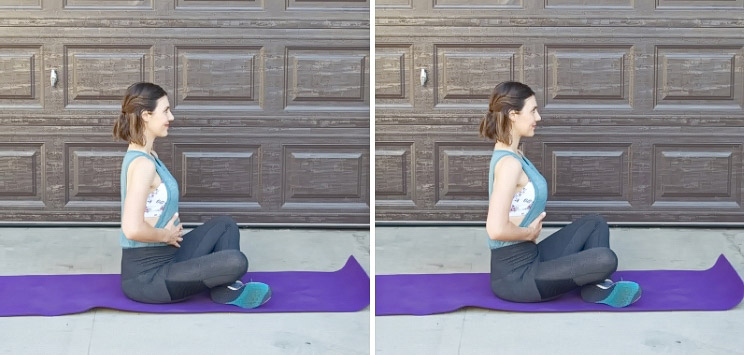
Breathing fully into the diaphragm releases tension in the mid back, which is common for new moms. This exercise also builds lung capacity and gently activates the abdominals. The added benefit to deep breathing is that it helps you relax!
- Sit comfortably on the floor, an exercise ball, or a chair. Wrap your hands around your waist and lower ribcage.
- Inhale, expanding the belly and rib cage so you feel your hands move apart.
- Exhale, contract the abdominals by drawing the belly button to the spine. You will feel your hands slide closer together.
- Repeat for 10 breaths.
Advanced version: Once you’re comfortable with this exercise, you can add the pelvic floor co-contraction as described in Pelvic Floor Lifts below. Inhale, relax the pelvic floor completely. Exhale, lifting the pelvic floor muscles as you contract the abdominals.
Abdominal Wrapping | 10 reps
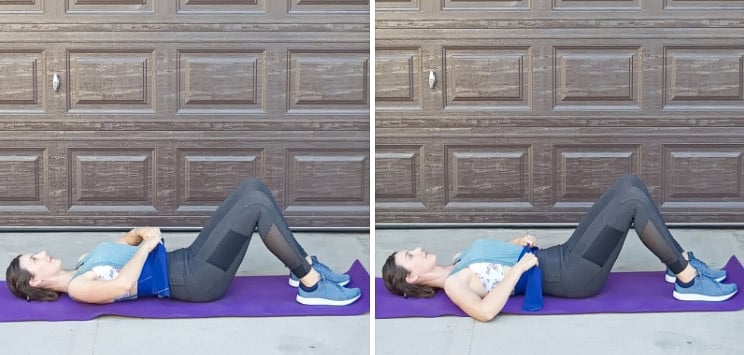
Abdominal Wrapping uses an exercise band to guide your outer abdominal muscles towards the midline. If you don’t have an exercise band, use a small sheet or even a baby swaddle folded lengthwise.
- Lie on your back with the band under your back. Wrap the band around your ribs and across your tummy. Hold one end of the band in each hand.
- Inhale, expanding the belly and rib cage. You will feel your waist press into your prop.
- Exhale, contract the abdominals and pull the splint tight across your abdomen. You will feel your front abdominal muscles move slightly closer together.
- Repeat for 10 reps.
Advanced version: Add Pelvic Floor Lifts as described below.
Pelvic Floor Lifts | 10 reps
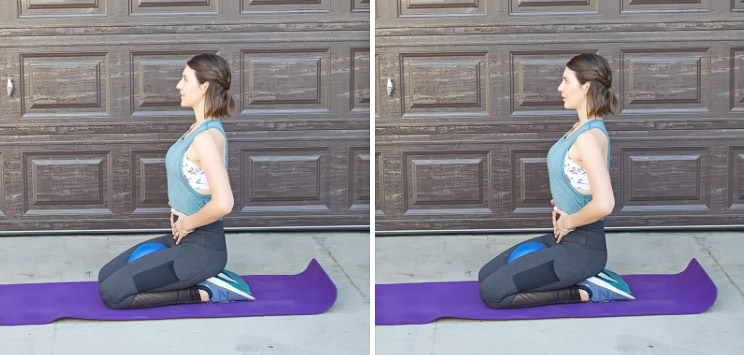
This exercise restrengthens the pelvic floor after childbirth. Kneel on the floor or sit on a chair and place a pillow or small exercise ball between your thighs. You will squeeze the pillow/ball as you lift your pelvic floor muscles.
- Sit or kneel with a tall spine. Relax your shoulders and place your hands on your lower abdomen.
- Inhale to relax your muscles. Then exhale to squeeze the pillow or ball with your inner thighs as you lift the pelvic floor muscles. Visualize sucking up water through a straw.
- Inhale to completely relax the pelvic floor muscles.
- Repeat for 10 reps.
Advanced version: Once your pelvic floor regains strength, you can hold the contraction for three counts before relaxing.
Core Stage 2
The following three exercises can be performed once you get exercise clearance from your doctor, which usually occurs six to eight weeks after labor, depending on your delivery. Start with the lowest amount of repetitions and slowly increase as you build core strength. The most important thing to remember with these exercises is to draw your abdominal and pelvic floor muscles INWARD and not let them bulge OUTWARD.
Heel Drops | 4-10 reps per side
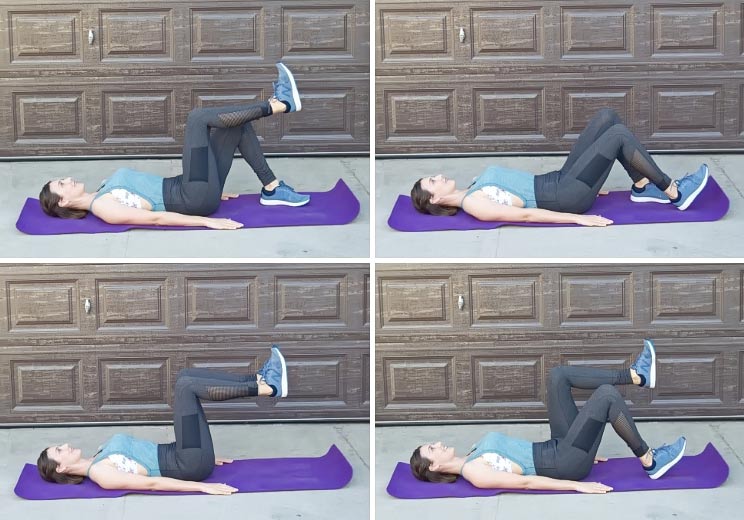
This exercise strengthens the lower abdominals. If you find this too challenging, and you notice your back muscles feel tight, only lower your heel half-way to the floor.
- Lie on your back with your pelvis in neutral and one knee lifted to a 90-degree angle.
- Inhale to relax your muscles. Then exhale to engage the abs and pelvic floor, slowly lowering your heel to tap the floor.
- Keep the heel on the floor during your inhale
- Exhale, reengage your muscles and lift the knee back to a 90-degree angle.
- Repeat four reps on this first side before switching legs. As you get stronger, increase to 10 reps per side.
Advanced version: Lower one heel at a time to touch the floor, alternating legs. Advancing this exercise will feel appropriate around 12+ weeks postpartum, and then only if your abdominals are strong enough to stay engaged throughout the whole movement.
Spinal Balance | 5 reps per side
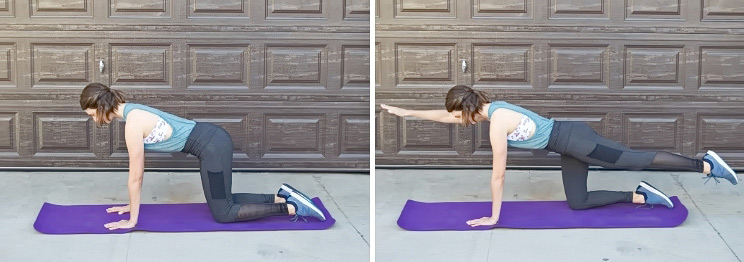
This exercise will challenge your balance and stability, which will help strengthen your obliques as well as your deep abdominals. You can modify it by only moving one arm OR one leg if you’d like.
- Start on all fours with your spine in neutral.
- Inhale to relax your muscles. Then exhale to engage your abs and pelvic floor as you extend your RIGHT arm and LEFT leg.
- Hold this position for the inhale, then lower on the exhale.
- Repeat five repetitions on the same side before switching to the left arm and right leg.
Advanced version: Hold the position for three to five breaths, keeping the abdominals engaged.
Knee Hovers | 6-10 reps
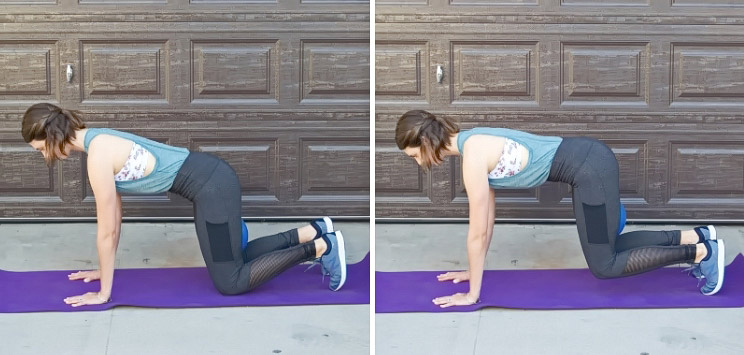
This exercise is good preparation to get your body ready for plank again. Visualize a corset wrapping around your tummy as you lift the knees.
- Start on all fours with your spine in neutral and your toes tucked.
- Inhale to relax your abdominals and pelvic floor. Then, exhale to engage your core muscles and lift your knees one inch off the mat. DO NOT let your abdominals bulge as you lift!
- Keep your abs engaged as you stay for one full breath, lowering on the exhale.
- Complete six to ten reps, depending on how your body feels.
Advanced version: Progress to full plank once you no longer have diastasis recti and your abdominals are strong.
Core Stage 3
These final two exercises are safe for new moms once you can maintain proper core engagement during the movements. This means that you can feel the abdominals working throughout the entire exercise and they do NOT bulge outwards at any stage.
Knee Hovers to Down Dog | 6-10 reps
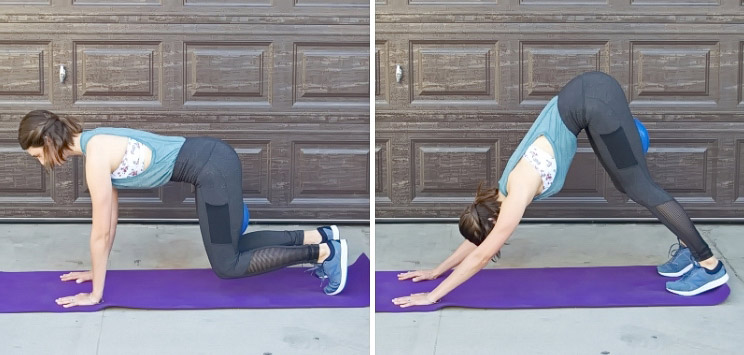
Your knees do not have to straighten when in Down Dog. It is preferable to maintain a neutral spine, which may require a bended knee as you see in the photo.
- Start on all fours, then exhale to come back into knee hovers.
- Take an inhale, then exhale to lift your hips up to a downward-facing dog position, maintaining the abdominal connection.
- Take another inhale, then exhale to slowly lower back through the knee hover position before returning your knees to the mat.
- Complete six to 10 reps.
Advanced version: Alternate between knee hover and Down Dog without lowering the knees to the mat in between.
Resistance Band Ab Lean | 5 reps
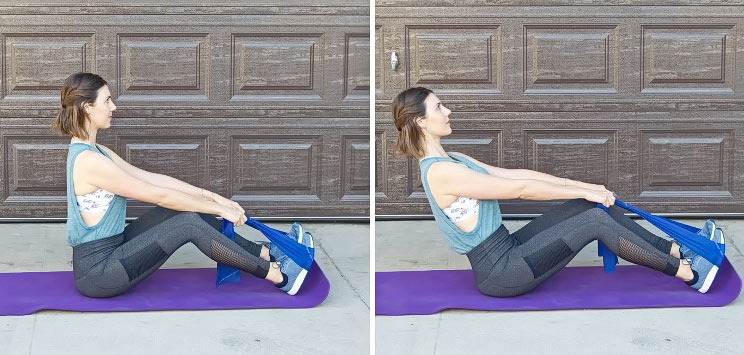
This movement prepares your abs to activate during day-to-day movements, such as when you’re getting up from the couch. Reach lower on your exercise band to provide more support and decrease your range of motion if needed.
- Sit on your butt and loop a resistance band around your feet. Hold both ends.
- Exhale to engage your core muscles and lean back slightly, until you feel your abs are challenged.
- Inhale to hold the position, maintaining the core connection. Then, exhale to pull your abs closer to your spine and return to seated.
- Complete five full reps.
Advanced version: Try this movement without an exercise band.



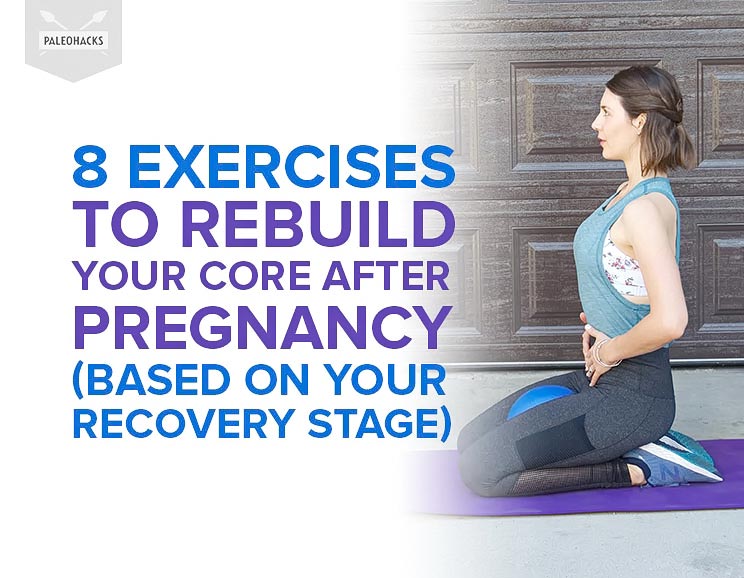
 Paleo Apple Nachos Drizzled in Date Caramel Syrup
Paleo Apple Nachos Drizzled in Date Caramel Syrup

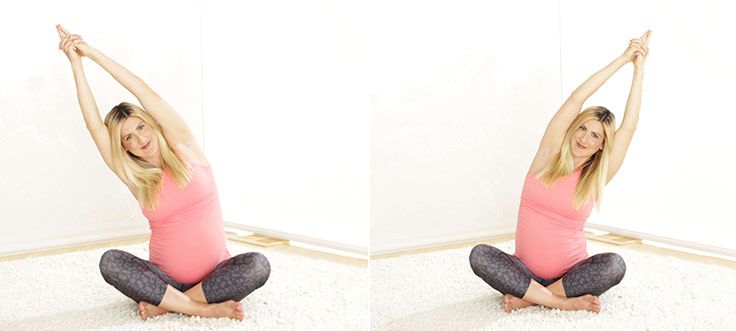

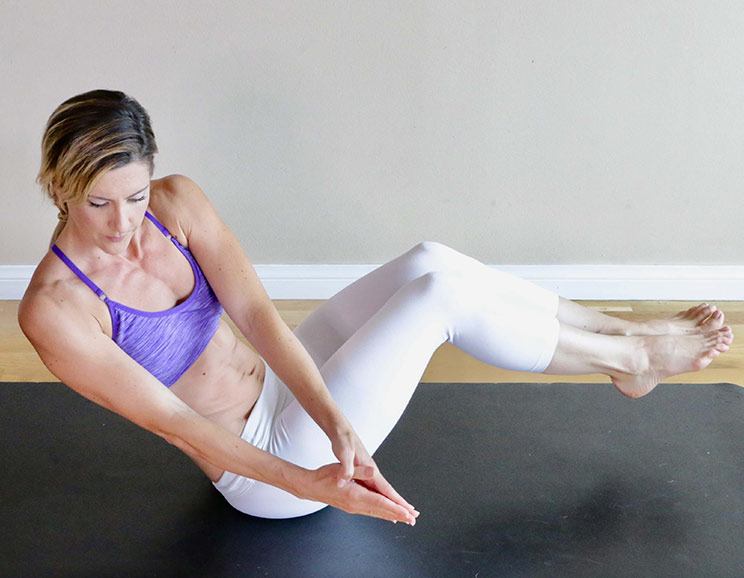
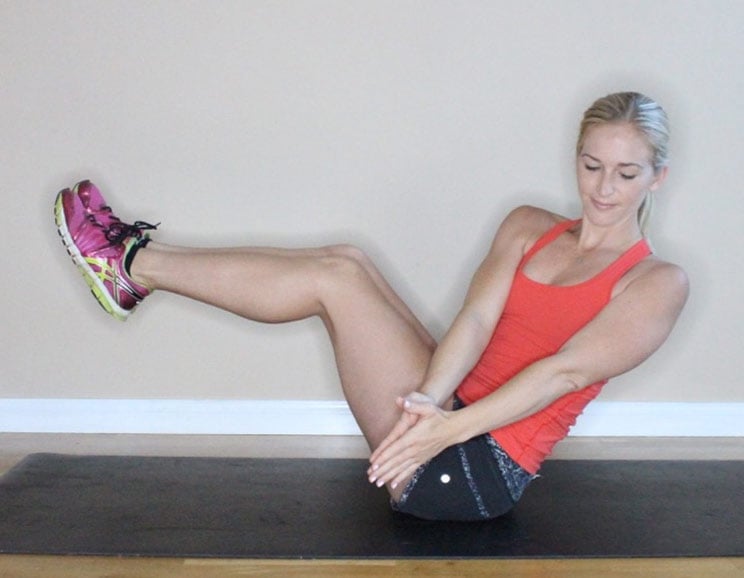
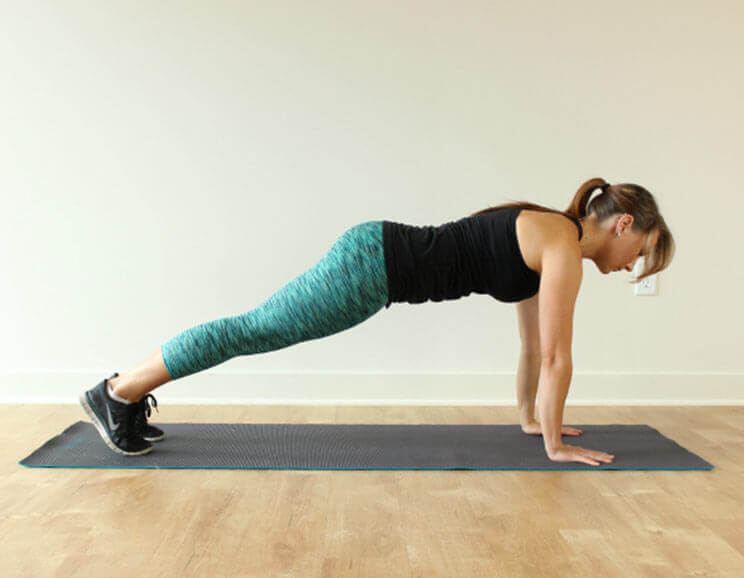
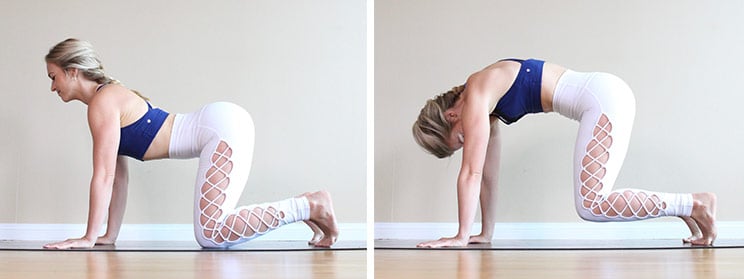

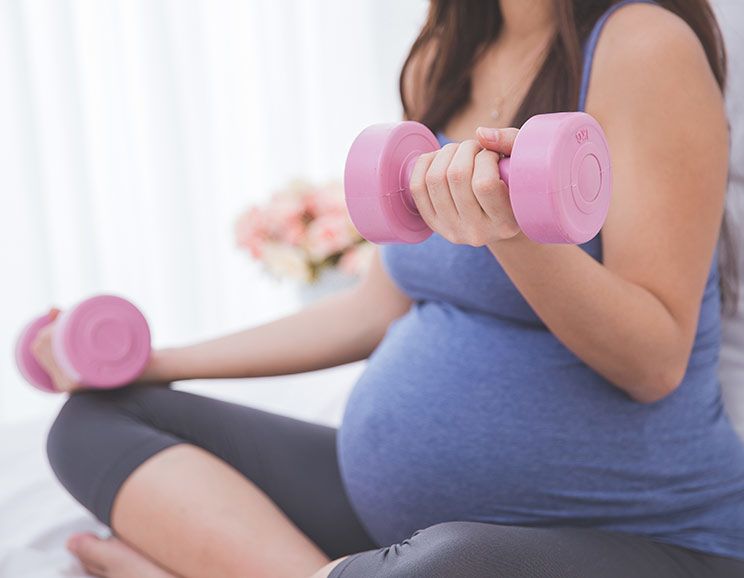
Show Comments